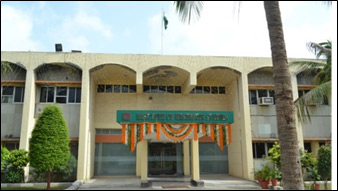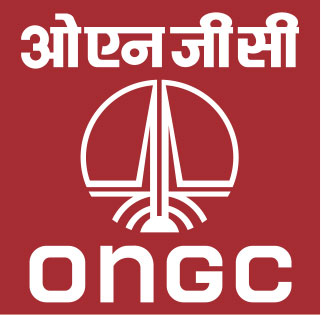
Introduction
The Institute of Reservoir Studies (IRS) was established to conduct applied research for development of reservoir engineering tools; techniques & technologies to maximize / optimize recoveries from oil & gas fields. Since its inception in 1978, IRS has contributed effectively to the development of new concepts and innovative techniques besides adopting state-of art technology for optimal exploitation of ONGC’s oil and gas fields.
The emphasis is on Integrated Reservoir Management combining Seismic, Geological, Well logging, Reservoir and Production. It works as a premium agency with modern laboratories facilities to prepare long-term strategies for EOR (Chemical, Thermal, CO2 and High-Pressure Air Injection) applications, design, commissioning and monitor EOR processes in mature fields to enhance secondary and tertiary recoveries.
The functions of IRS broadly include oil/gas field development, reservoir monitoring, Enhanced Oil Recovery (EOR) studies and other laboratory studies which are performed by team of Geoscientists and Engineers using industry standard hardware & software and laboratories with state of art equipment.
Capabilities
The major functional domains of the institute are as under:
- Monetization/ Development/ Redevelopment for oil & gas fields
- Laboratory Studies for data generation & Productivity Enhancement
- Enhanced Oil Recovery
- Geo-cellular Modelling
Highlights of FY 2023-24
A total of 110 projects have been completed under AWP 2023-24. 14 Unscheduled projects have been completed.
Significant Projects
The major projects are:
- 7 GCM preparation and updating projects were taken up.
- Mandapeta & Gollapalli sands of Mandapeta field
- Kalol pays sands of Gamij Field
- Pasarlapudi sands of Tatipaka Field
- North Tapti Field
- Kalol Sands of Sobhasan Complex
- Pukhraj (SW of South Tapti) Field
- A total of 428 development locations were generated for different fields based on about 40 development studies. The major studies are –
- Mumbai High redevelopment Phase VI for the development of L-I, L-II, L-III, Basal Clastics, S1 and minor reservoirs of F-27, L-IV & L-VI.
- Initial development Plan for WO-5-14 and WO-5-15 structures.
- Revision of cluster-9 scheme for monetising B-45-7 & B-192-19 discoveries and additional Clamp-on inputs in WO-24-3 structure.
- Development plan of Sand-10/30 pays of Pukhraj (ST-6), C-2-8/11 and C-2-14 Blocks.
- Integrated development of B-37 blocks, and DSF-III block (extension of Neelam field towards northwestern part).
- Additional Development of Ratna and R-series (ADR-I) fields including VGN-1 and R-12-6/8 area.
- Integrated development of Chandrika and GS-49 blocks, identification of inputs for YS-6-2(Sub) and YS-10-1 blocks under DSF-III of KG offshore.
- Development inputs for K-VII & K-XI Sand of Kalol Field & Mandhali Sand of South Sobhasan and West Sobhasan Field in Western Onshore Basin.
- Review of full field ASP scheme of K-III+IV Sands of Jhalora Field incorporating modified ASP formulation from lab study, drilling results and updated history.
- Review of existing development plan and generation of additional inputs for unconventional Jharia CBM block through simulation study.
- Development input for Block of W#487 of GS-6A Sand of Gandhar Field, TS-2 sand (Block-2,4 & 10) of Olpad Field, GS-1 Sand (W#1) of West Matar Field, S5 Sand (W#35) of Kosamba Field and S-5 Sand of Ankleshwar Field.
- Development inputs for Pasarlapudi, Kesavdasupalem fields in KG Onland Basin.
- Development inputs for BCS Pay of Geleki Field, Mid-Bokabil pay of Kasomarigaon field and N-60 pay of Nambar field in Assam & Assam Arakan Basin.
- Development inputs for FDP of Asokenagar Field.
- Performance Review & updating of dynamic model for Field implementation of chemical EOR (SP) process in Kalol sand in southern part of the North Kadi field.
- AI/ML Studies
- Implementation of Water Flood Optimization and mid-course correction through Data Physics Modelling using Tachyus software in Mumbai High (L-II) and Heera Fields on pilot basis.
- Identification of missed opportunities (55 ZT & AP) in Wavel Member of Kalol field (K-II to K-V) using Machine learning techniques
- Development of an alternate node-based history-matching method for matured sands (K-VIII+IX+X) of Viraj Field using Machine Learning.
- Laboratory Studies
- In line with ONGC’s vision of Net-Zero by 2038, a comprehensive three-year contract was signed with the National Centre of Excellence in Carbon Capture & Utilization (NCOE-CCU), IIT-B to explore the feasibility of carbon sequestration in saline aquifers and basalt in WON Basin.
- Bassein field was taken up for Core Flood experiments to determine displacement efficiency using CO2 as injection gas for CO2-Enhanced Gas Recovery (CSEGR). This experiment was first of its kind as an R&D project for gas-to-gas displacement study.
- Mole Percentage of components in produced gas at outlet (Native Core)
- Designed SWTT studies for Neelam Heera & Mumbai High Asset. Conducted successful surveillance through IWTT of the ongoing CEOR pilot projects of North Kadi & Kalol Field and water-flood in Ahmedabad and Wadu-Paliyad fields.
- For characterization of rocks, Routine core analysis on 310 samples & Special Core Analysis on 115 samples from different fields viz. Mumbai High, Sobhasan, Kalol, Nawagam, Ahmedabad, Agartala Dome & Konaban were carried out.
- XRD studies and mineralogical analyses are carried out in over 650 samples, SEM based petrographic studies on over 120 samples and thin section studies on over 50 samples for characterization of reservoirs of Cambay, Western Offshore, A&AA and KG Basin.
- Reservoir Fluid characterization through Phase behavioural studies on 24 oil and gas samples and composition & SARA analysis of 518 reservoir fluid samples from different fields were carried out. Studied the effect of super critical CO2 on the phase behaviour of light oil of tight pay of K-XI sand of Kalol field.
- As a part of Industry-Academia collaboration, laboratory design of SP formulation has been completed for Bechraji KS-1, Mumbai High L-III and Heera Bassein pays in collaboration with University of Texas (UT). Using this formulation, simulation & Pilot design for Bechraji KS-I pay has been completed. Simulation study for pilot design in Mumbai High and Heera fields are under progress.
- Analysed 132 water samples from different fields for surveillance of water injection. Compatibility study and treatment design of water injection was carried out for Padra, Kalol and M fields of KG-DWN-98/2.
- An innovative R&D project to investigate the impact of Potential Determining Ions (PDIs) on Wettability Alteration Using Spontaneous Imbibition and oil recovery during Sequential Displacement process in L-III pay of Mumbai High North was carried out.
- Biocide optimization study has been carried out for Jhalora and Nawagam fields. Additionally, bacteriological analysis of a total of 231 samples of different fields was carried out for SRB and GAB count to identify the bacterial growth.
- For mitigation of paraffin deposition with PDS-10 culture, five oil wells of Vadatal and Nadiad fields were recommended on pilot basis.
- Formulation optimization studies for WSO/PM jobs were carried out for various fields. Accordingly, 96 WSO/PM job plans were issued, and 41 jobs executed successfully which has resulted in oil gain of 0.014 MMm3.
- Reduced gelation time from 7-10 days to 3-4 days using optimized formulation leading to significant saving in rig time for water shutoff jobs. Job plans with revised gel formulation have been issued for execution.
- EOR Studies
- Feasibility studies for Smart Water flooding in L-III pay of Mumbai High North.
- Core flood study for CO2 injection in offshore gas reservoir of Bassein Field.
- Mole Percentage of components in produced gas at outlet (Native Core)
- Feasibility studies of Light Oil Air Injection in Akholjuni & Downdip air injection in Balol South.
- Feasibility studies for Air Injection in Nawagam Lower Pay.
- Expansion of Air injection process in non-ISC area (block 6) of Lanwa.
- Flue gas/CO2 Injection in Lanwa (North).
- Commercial Surfactant Polymer EOR scheme in southern part of North Kadi.
- Re-designing ASP formulations for Kalol K-XII and Sobhasan SS-II fields.
- Re-designing of CEOR pilot in TS-3 pay of Lakwa field. Envisaged incremental oil of 5464 m3 in 36 months of pilot project life.
Collaborative projects/Joint Research projects/ MOUs
- Consultancy to ONGC Videsh Limited
- Reviewed Development Concept of Velasquez Field of MECL, Colombia.
- Reviewed opportunity in ACG Field, Azerbaijan.
- Evaluated Potential Acquisition Opportunity in Ultra-deep Water Offshore Namibia.
Technology Induction/Absorption
- Considering global technological advancements, Thermal process Lab has been upgraded with High Pressure Air Injection (HPAI) System and induction of High Pressure Ramped-Temperature Oxidation (HPRTO), making it the only facility in the world offering an extensive laboratory evaluation of Thermal and Hybrid EOR processes.
- Acquired world class equipment for Tracer studies viz. Automated SPE, GCMSMS, Vortex Mixer, Hydrogen generator & Nitrogen Evaporator, leading to parts-per-trillion level measurements, lower emissions and wastage.
- A new CO2 Core Flood Apparatus was successfully commissioned enabling advanced studies in CCUS.
Papers Published / Presented
- The institute published/presented 16 technical papers in national/international - journals/conferences in 2023-24.
IPRs / Patents / Copyrights / Trademarks
The institute has been granted 7 patents till 31st March 2024. The following are the details for FY 23-24:
Patent Granted: 1
- System and method for delineating reservoir layer of intermediate impedance.

